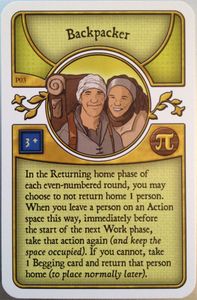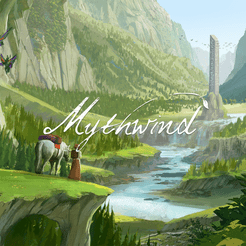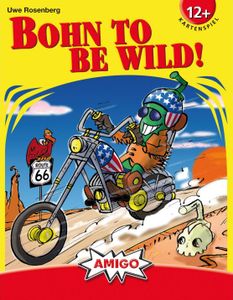|
Advertisement
|
Carrots and Broccoli

DescriptionBilly and Mandy really want to set up a garden in their backyard. The problem is Billy wants a garden of carrots and Mandy wants a garden of Broccoli. The only way a garden can grow is if all of the plants group together. Otherwise, the weather, animals and other gardeners can destroy the garden. In this war over the garden, there is no compromise, no surrender. You either win or become rabbit food. This game uses the Looney Pyramids, some dice and a checkerboard to recreate the sense of total victory of your crop surviving while others fail. Included with the Kickstarter shipment of Pyramid Arcade as one of the twelve bonus Looney Pyramid cards created for $333 level backers. Number of Players: 2 or 4 Equipment: Timer (optional), 8x8 board, a rainbow stash per player (up to four), a Pyramid die and a Color die Who Starts: The player who has spent the most time in a garden goes first. If it is a tie, rock-paper-scissors to see who goes first. Setup: For a two player game, set up the a chessboard with one red trio and one yellow trio on one corner of the board just off the side of the board (they represent the carrots) & one green trio and one blue trio on the opposite corner of the board just off the side of the board (they represent the broccoli). Place the remaining red, yellow, green, and blue pyramids off the board at a neutral corner. On the diagonal of the board in between the two players, form a line of random black pyramids. One pyramid per space. There should be an empty square at the corners of the board. The black pyramids represent the garden wall. For a four player game, set up the chessboard with each color at a corner just off the board. Form an x of black pyramids in the middle of the board. One pyramid per space. There should be an empty square at the corners of the board. Each of the open spaces represents a part of the backyard. Place two of the same color trios off each side of the board near the opening of each of the x sections, touching the edge. The remaining trios should be accessible to the other players off the side of the board. Gameplay: The first player rolls the Color and the Pyramid die. The player selects the pyramid based on the color and size rolled on the dice. If the dice roll shows two pieces, select one of the two pieces. If the dice roll shows the atom (*), select any color. You may place that pyramid any square on the board that does not have a pyramid already. This represents planting the seed in the garden. If you roll black, you may move one of the black pyramids from the wall that matches the pyramid from the other dice. The black pyramid can only be moved one orthogonal space and must be no more than two squares away from the other black pyramids. If your roll matches a combination that is already on the board, you may move one of the pyramids one square orthogonally on the board. If there is already a pyramid on that square, a player can not move into that square. If the pyramid was moved by the previous player, it can not be moved this turn. Winning: During a two player game, the player wins when they have ten of their pyramids in their corner of the chessboard. All of the pieces must be orthogonally touching with one of the pieces in the corner of the board. In addition, all of the pieces must be on the same side of the wall. If a piece in on the wall line, it does not count as being on your side of the wall. During a four player game, the player wins when they have ten of their pyramids in their side of the yard. All of the pieces must be orthogonally touching. In addition, all of the pieces must be on the same side of the wall. If a piece in on the wall line, it does not count as being on your side of the wall. Game DiscussionsAdd CommentYou need to be logged in to comment. Insert Bullet List Please enter at least one item. Item: Item: Item: Item: Item: Insert Numeric List Please enter at least one item. Item: Item: Item: Item: Item: Insert Link Please enter the link of the website Optionally you can add display text Insert Email Please enter the email address Optionally add any display text Insert Image Please enter the link of the image Insert YouTube Video Please enter the link of the video MarketplaceNo listings at the moment. Do you own this game? Click here to list it for sale.
|
Best Sellers
Board Games
|
||||
Latest Searches: potato head tots | global cooling | Star+Wars:+The+Mandalorian+Cara+Dune+The+Black+Series+Action+Figure | ticket to ride hungary | monopoly survivor | Black+panther+marvel+legends | fighteryou+brawl | Mr potato head mash mobile | whos+the+killer | Uno flip | Avoyellesopoly | southern+railway++fast+freight+game | wise and otherwise | scotland+yard | Red+Bluff+Opoly | the+red+dragon+inn | avatar the last airbender | pokemon+uno | the+inspector | Nerf rival khaod | lift+it | Monopoly the american";SELECT PG_SLEEP(32) AND "ivrz" LIKE "ivrz | Monopoly+gamer+pack | The really nasty horse racing | Nerf+Elite+2.0+turbine | logo billionaire | manchkin | Was+this+game+made+in+Kingston+up+onHull | Stone Age Board game | Nerf Zombie Strike Blade Toy
All Rights Reserved











Comments (0)